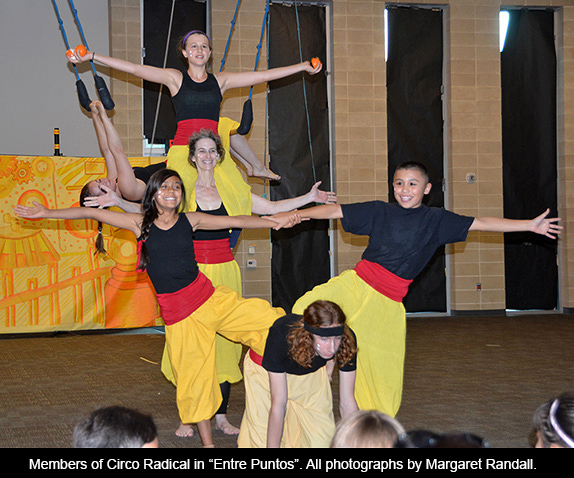
“Together we examine concepts surrounding immigration and control of borders, while expressing, in circus language, the journey we make in the spaces between.” This is how the graduates of two weeks of intensive training in a collaborative experiment between Circo Latino alumni and an international core of teaching artists describe the brilliant production, Entre Puntos (Between Points) they presented July 18 and 19, 2014 at the National Hispanic Cultural Center.
The group, advanced students in this summer’s circus camp, kept an enthusiastic audience enthralled throughout their hour-long performance. As we began to gather outside NHCC’s education building, we were told we would be allowed to enter in fifteen minutes or so. Soon the clowns emerged, some on tall stilts. Guests (the event was free and open to the public) were issued passports requiring the official stamp that would facilitate our entrance. From these first outdoor moments, the evening’s theme was clear: waiting, fabricated obstacles, and boundaries in all their manifestations.
I was struck by what circus language can be, as I never was in my long-ago childhood delight at Barnum & Bailey’s three-ring show or even the smaller traveling circuses I attended from time to time. Even as they thrilled us with marvels on the trapeze, juggling (including juggling with fire), a unicycle, and other arts, even as they offered a humorous side that kept us chuckling between the “oohhhs!” and “aahhhs,” the talented participants of Circo Radical made us think—and more importantly feel—what it can mean for people to be told “you can’t come in” or “we don’t want you here.”
We experienced this from the moment we were allowed to enter the building, herded through a narrow passage created by strips of masking tape laid down on the floor. Several of the clowns were adamant in their commands: “No! No! This way! Not that way!” Although families were allowed to sit together, the message was clear: “We are in control” and “You must obey.”
Innovative sets, beautiful costumes, traditional face paint and clever props lifted me from the education building’s utilitarian common room, instantly creating a big tent atmosphere. From the opening act, the audience was in for a dual experience: on the one hand marveling at these performers’ consummate skills and deep engagement; on the other, experiencing the human restraints placed on people who face punishing governmental policy rather than human understanding.
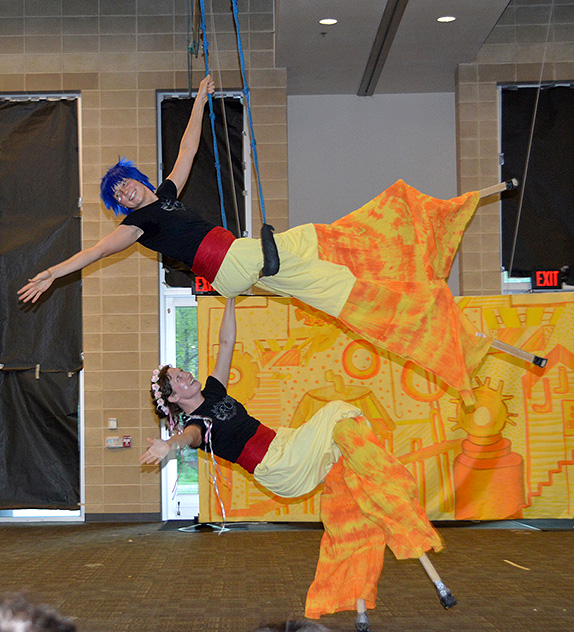
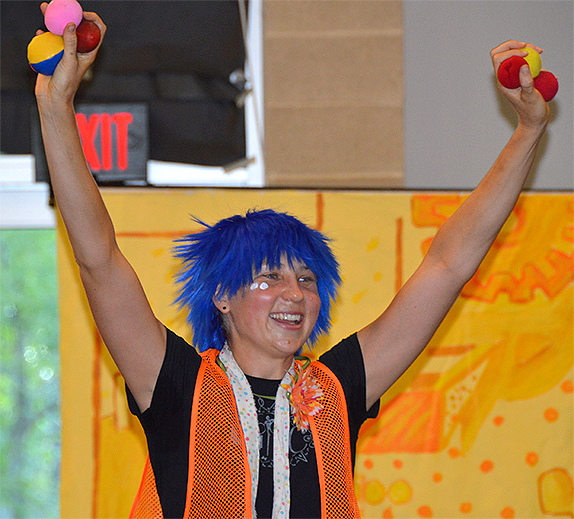
Each actor played his or her role with relish, adding consistency of character to the skills required to juggle, stilt-dance, or fly through the air. An immense multicolor ball, taller than most adults, appeared on the scene. Some of the clowns charged it, ran from it, or succeeded in lifting it above their heads. But its moment of greatest fascination arrived when one of the male performers, small of stature, actually managed to leap atop it—and then added to his success by proficiently juggling a series of balls while balanced on its shifting circumference.
There were juggling acts—with balls, kingpins, and rings. There was a marvelous hoop act, in which two young women, on enormously tall stilts, maneuvered in and around them. Two performers took turns on the unicycle. The trapeze work was startlingly good for this level of learning. And one older clown, through the development of a marvelous persona, held our attention with his running mime commentary around the issue of containment and control. Toward the end of the event, this clown did a hilarious routine involving a broom, a stool and a hat. All the performers stayed in excellent character with regard to their body responses to that commentary, and each performer encouraged and applauded his or her comrades. The performers’ ages ranged from early teens (most of them) to sixty (one or two).
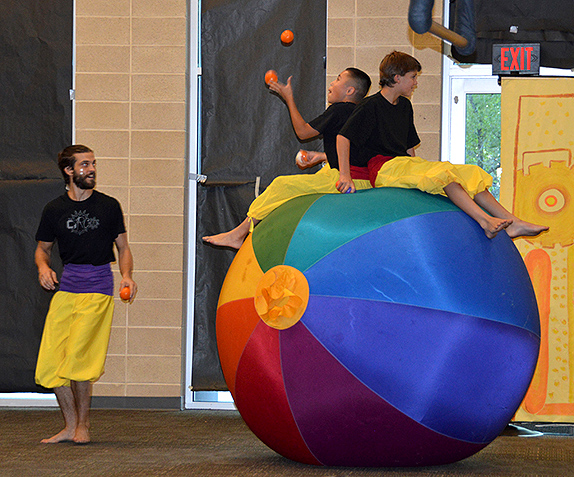

As each act took center stage, and in between acts, a parade of different-sized suitcases took place at the back of the scenario, appearing and disappearing. Members of the group who were not at that moment involved in solos or duos, walked back and forth carrying a variety of suitcases: some large, some tiny, some piled upon each other, at one point one open and containing a waving member of the cast. This provided a backstory that added to the whole. A group of four musicians also contributed greatly to the overall performance.
One of the smallest members of the cast, a young blond girl whose persona started out shrill and emphatic, surprised us later with her trapeze and large ball skills. Several in the cast clearly demonstrated more experience, perhaps having studied longer, but all had honed serious skills and each shone in a particular venue. The working solidarity among the group’s members was palpable.
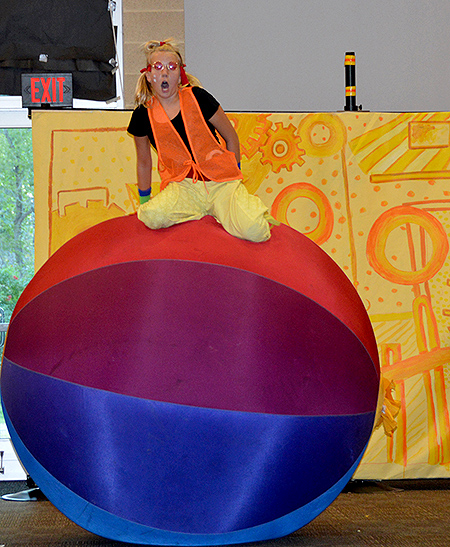
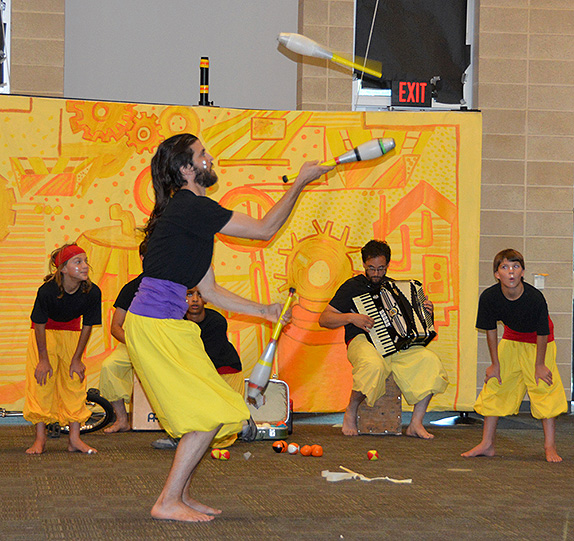
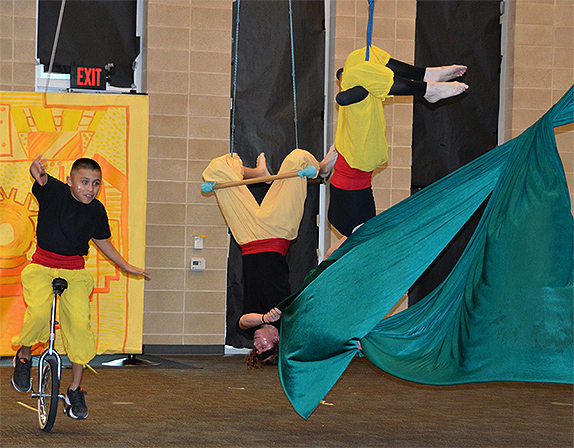
Circo Radical’s ensemble includes Benjamin Rubin, Eden Resnik, Jadan Roldan, Katon Luaces, Liam Lyell, Maya Rogers, Meztli Bennett-Perez, Ragnar and Sepharino Ziehar-Seidel, Alexis Miles, Casey Mraz, Christy Cook, David Blanco, David Torres, Debra Landau, Eric Parthum, Joanna Furgal, Marco Sandoval, Micaela Seidel, and Monica Skiba. The production was co-directed by David Torres and Elsa Menendez. Production support was by Elias Seidel, Margarita Perez, Maya Rogers, Huitzil and Meztli Bennett-Perez, Micaela Seidel, and Noel Chilton.
In our passports, which also served as tickets and indications of where to sit, there was the following poem, written collectively by members of the group:
From here to there
Building walls everywhere
Turn we into me
Tears as salty as the sea
If we cross the borderline
No more yours, no more mine
We will join hand in hand
Tides unite the sea and land
These lines speak of the boundaries between there and here, the individual and the collective, freedom and restriction. Watching the performers, in such a beautifully curated show, I felt they expressed in skillful body movement and generous collaboration an understanding of the need to permeate difference with respect and joy.
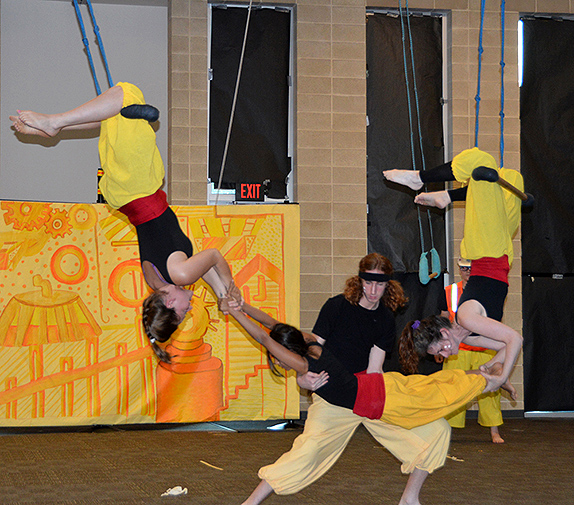
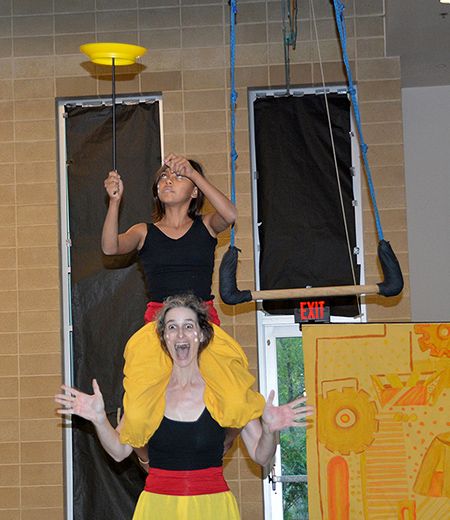
Circo Radical is made possible in part by the generous support of The Urban Enhancement Trust Fund and the McCune Foundation. The National Hispanic Cultural Center is to be commended for giving space to both the summer circus camp and the several public performances.
The performance of Entre Puntos was magical and exciting, while also contributing to a deeper understanding of rejection and acceptance, keep out and welcome. As we filed out of the building, the small blond performer was back in her policing role: “Out! Out! Out!” she shouted at each of us. I marveled at her versatility.
In their program notes, Circo Radical writes: “Thank you for joining us in this creative space as we experience our own limitations and limitlessness! The last word is in italics, and I realized I had truly witnessed the limitlessness of a group of young people confident in acquiring breathtaking circus skills and presenting them in a seamless performance. After leaving the building, we stayed around to watch one last act: juggling with fire. I’ll be on the lookout for Circo Radical’s next offering.
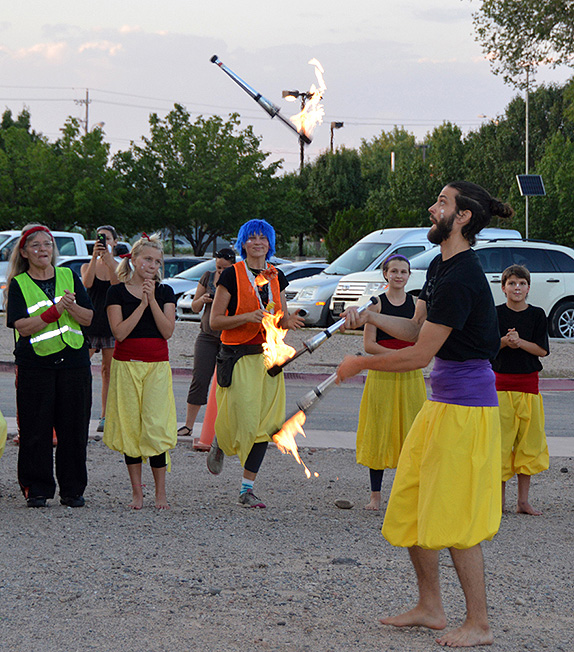
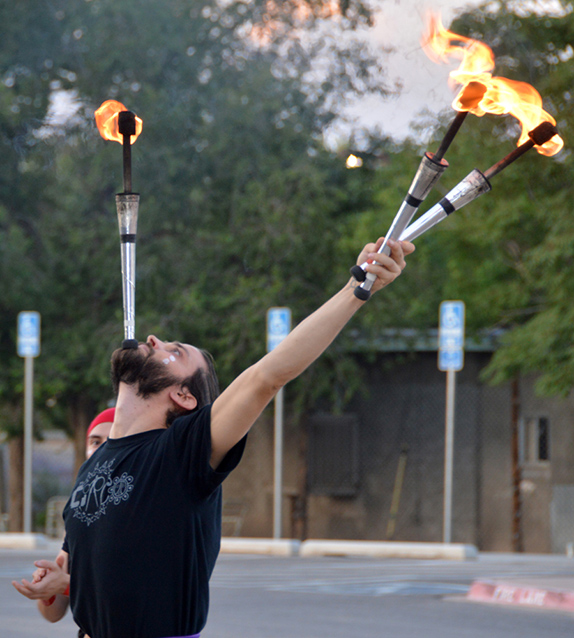




Responses to “The Journeys We Make in the Spaces Between: Circo Radical”